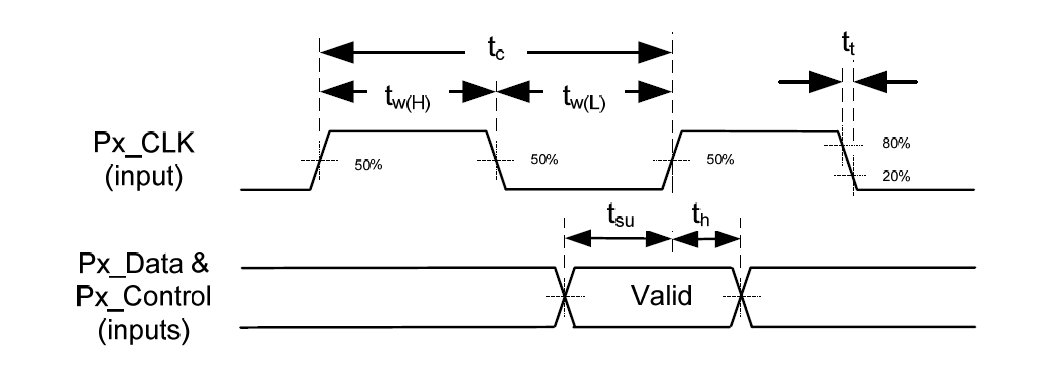DLPS029F April 2013 – May 2019 DLPC350
PRODUCTION DATA.
- 1 Features
- 2 Applications
- 3 Description
- 4 Revision History
- 5 Pin Configuration and Functions
-
6 Specifications
- 6.1 Absolute Maximum Ratings
- 6.2 ESD Ratings
- 6.3 Recommended Operating Conditions
- 6.4 Thermal Information
- 6.5 I/O Electrical Characteristics
- 6.6 I2C0 and I2C1 Interface Timing Requirements
- 6.7 Port 1 Input Pixel Interface Timing Requirements
- 6.8 Port 2 Input Pixel Interface (FPD-Link Compatible LVDS Input) Timing Requirements
- 6.9 System Oscillator Timing Requirements
- 6.10 Reset Timing Requirements
- 6.11 Video Timing Input Blanking Specification
- 6.12 Programmable Output Clocks Switching Characteristics
- 6.13 DMD Interface Switching Characteristics
- 6.14 JTAG Interface: I/O Boundary Scan Application Switching Characteristics
- 7 Parameter Measurement Information
- 8 Detailed Description
- 9 Application and Implementation
- 10Power Supply Recommendations
-
11Layout
- 11.1 Layout Guidelines
- 11.2 Layout Example
- 12Device and Documentation Support
- 13Mechanical, Packaging, and Orderable Information
Package Options
Mechanical Data (Package|Pins)
- ZFF|419
Thermal pad, mechanical data (Package|Pins)
6.10 Reset Timing Requirements
| PARAMETER | MIN | MAX | UNIT | ||
|---|---|---|---|---|---|
| tw1(L) | Pulse duration, inactive low, PWRGOOD | 50% reference points | 4 | µs | |
| tt1 | Transition time, PWRGOOD | 20% to 80% reference points | 625 | µs | |
| tw2(L) | Pulse duration, inactive low, POSENSE | 50% reference points | 500 | µs | |
| tt2 | Transition time, POSENSE | 20% to 80% reference points | 1 | µs | |
| tPH | Power hold time, POSENSE remains active after PWRGOOD is de-asserted | 20% to 80% reference points | 500 | µs | |
 Figure 1. Port 1 Input Pixel Timing
Figure 1. Port 1 Input Pixel Timing  Figure 2. LVDS Timing Diagram
Figure 2. LVDS Timing Diagram  Figure 3. (LVDS) Link Start-up Timing
Figure 3. (LVDS) Link Start-up Timing  Figure 4. (LVDS) Clock: Data Skew Definition
Figure 4. (LVDS) Clock: Data Skew Definition  Figure 5. System Oscillators Timing
Figure 5. System Oscillators Timing